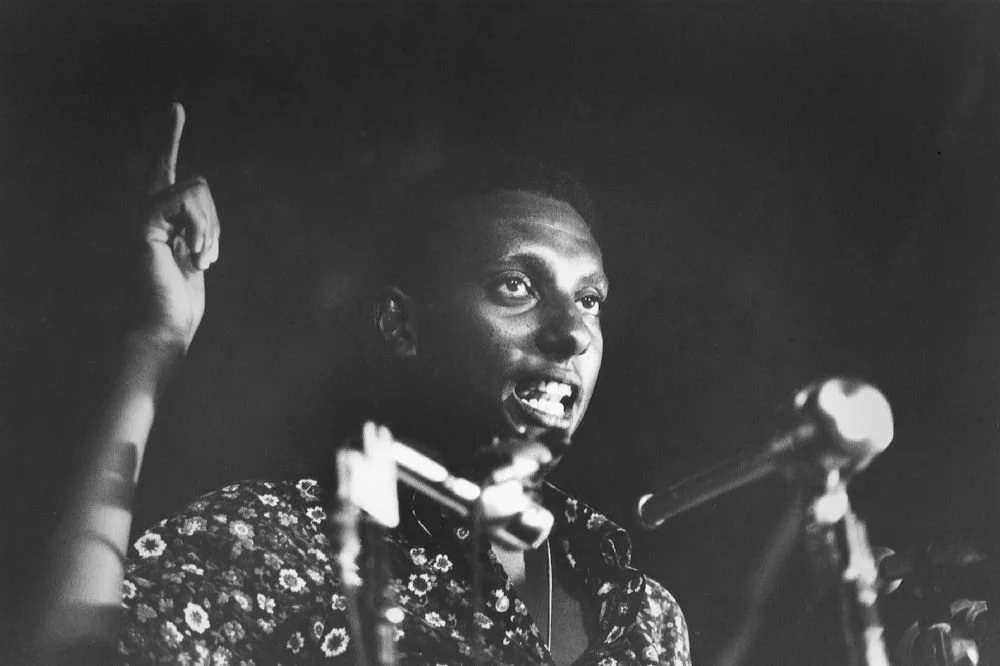On the night of June 16, 1966, Student Nonviolent Coordinating Committee (SNCC) Chair Stokely Carmichael (Later Kwame Ture) proclaimed to the crowd, “We been saying freedom for six years and we ain’t got nothin’. What we got to start saying now is Black Power! We want Black Power.” With these words Carmichael addressed 1,500 people at a rally in Greenwood, Mississippi, the Black Power Era began.
Carmichael was in Mississippi following the attempted assassination of James Meredith by James Aubrey Norvell, a White supremacist sniper, on June 6, 1966, one day after he began his solitary March Against Fear from Memphis, Tennessee to his intended destination, Jackson, Mississippi. When he was shot, major civil rights organizations including SNCC, SCLC, CORE, the Mississippi Freedom Democratic Party (MFDP) and the Deacons for Defense and Justice (DDJ) decided to continue the march on his behalf.
On June 16, 1966, the marchers arrived in Greenwood, Mississippi and attempted to set up camp at the Stone Street Negro Elementary School. Local White officials told them they were not allowed on the school’s property and Stokely Carmichael, Robert Smith, and Bruce Bains were arrested for trespassing. Carmichael was released from jail several hours later and then addressed the marchers at a nighttime rally. He said “This is the twenty-seventh time I have been arrested. I ain’t going to jail no more. We been saying freedom for six years and we ain’t got nothin’. What we get to start saying now is Black Power!”
Following Carmichael speech divisions which had been quietly evolving among the major civil rights organizations now burst into full view. SNCC embraced Black Power while SCLC leader Martin Luther King continued to use the Freedom Now slogan and reiterated his commitment to non-violence. Carmichael later told King: “Martin, I deliberately decided to raise this issue on the march in order to give it a national forum and force you to take a stand for Black Power.” King responded, “I have been used before. One more time won’t hurt.”
The March Against Fear continued until June 26 and the number of participants swelled to 15,000 by the time it reached Jackson. Immediately after the march, SNCC and CORE publicly abandoned non-violence as a strategy and adopted the goal of racial separatism. Other organizations embraced Black Power including the Black Panther Party for Self Defense (BPP) which was founded four months later in October 1966.
SCLC, the NAACP, and other civil rights organizations rejected and criticized the Black Power ideology. Despite King’s public rejection of Black Power, he told the SCLC staff on November 14, 1966, that Black Power “was born from…despair and disappointment [and is] a cry of pain. It is…a reaction to the failure of White Power to deliver [its] promises and to do it in a hurry…” In contrast Carmichael said in his 1967 book, Black Power: The Politics of Liberation that the words were “…a call for black people in this country to unite, to recognize their heritage, to build a sense of community. It is a call for black people to define their own goals, to lead their own organizations.”
Do you find this information helpful? A small donation would help us keep this available to all. Forego a bottle of soda and donate its cost to us for the information you just learned, and feel good about helping to make it available to everyone.
BlackPast.org is a 501(c)(3) non-profit and our EIN is 26-1625373. Your donation is fully tax-deductible.
“The King Institute, Stanford University, https://kinginstitute.stanford.edu/black-power; Carmichael, Stokely Carmichael and Charles V. Hamilton, Black Power. The Politics of Liberation in America (New York: Vintage Books, 1967); David Garrow, Bearing the Cross: Martin Luther King Jr., and the Southern Christian Leadership Conference (New York: William Morrow Company, 1987).
Your support is crucial to our mission.
Donate today to help us advance Black history education and foster a more inclusive understanding of our shared cultural heritage.

